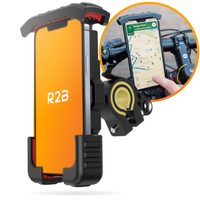No Products in the Cart

What is NFC? Everything about this wireless technology
Time to read 2 min
Time to read 2 min
NFC stands for Near Field Communication . This is a technology that allows devices to communicate wirelessly with each other over short distances. NFC works within a radius of just a few centimeters, making it ideal for fast and secure data transfer. Think of contactless payments, pairing devices and using digital access cards.
NFC uses radio waves to exchange information between two NFC-enabled devices. An NFC chip can both send and receive data. There are three modes of operation:
Reader/Writer Mode : Allows a device to read or program NFC tags. This is used, for example, for digital business cards or smart posters.
Peer-to-peer mode : Two devices exchange information, such as contact details or files.
Card Emulation Mode : NFC devices function as a bank card or access card, allowing contactless payments.
NFC has many applications in daily life:
The most well-known application of NFC is mobile payment. With apps like Apple Pay and Google Pay, you simply hold your phone against a payment terminal to pay.
NFC lets you quickly share contact details, photos or documents by holding two phones together.
With an NFC tag, you can automate tasks like turning on Wi-Fi, opening a website, or playing music with a single tap.
NFC is often used in digital keys, such as hotel rooms, office badges and even as digital car keys.
Many public transport chip cards and mobile transport passes work with NFC. This allows you to check in and out with your phone or smartwatch.
Thanks to this technology, you can project your favorite photo on the back of your phone case. You just need to turn on NFC and then you can project a photo from your gallery on the back of the photo case of R2B Store.
NFC is more secure than many other wireless technologies, such as Bluetooth, because of its short range. This makes it harder for hackers to intercept data. However, there are a few risks:
Skimming : Malicious actors can attempt to tap into NFC payments, but this rarely happens due to banks' built-in security.
Accidental payments : That's why most payment apps require you to enter your fingerprint or PIN code before a payment goes through.
Most modern smartphones have an NFC chip. It is not necessary to have a Wi-Fi connection to use NFC. Check this in the settings of your phone:
Android : Go to Settings > Connected devices > NFC .
iPhone : Since the iPhone 7, NFC has been standard and works automatically for Apple Pay.
No, NFC uses little power, because it is only active when needed. Even when NFC is on, it hardly affects the battery life.
Although NFC uses little battery, some people turn it off to:
Save battery (especially on older phones).
Privacy reasons (to prevent skimming).
Avoid unintended payments.
You can turn off NFC via NFC settings. These are often found near your normal settings. Please note that you have to turn on NFC to be able to use this smart technology again.
Yes, NFC usually works fine through thin cases. Only metal cases or extremely thick cases can block the signal. Contactless payments can also be made through a phone case. The wireless connection can only have problems with thick cases.
If you want more information about NFC technology, there are enough related articles on the internet for the nfc reader. Click here to read more information about the nfc chip.

